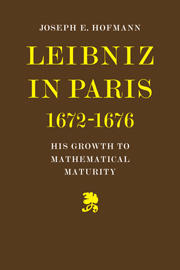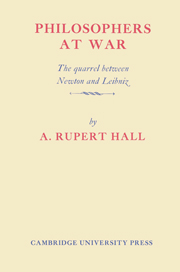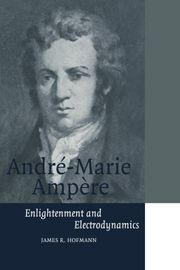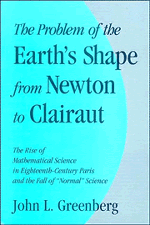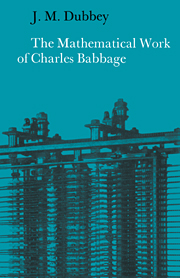Leibniz in Paris 1672-1676
When Gottfried Wilhelm Leibniz first arrived in Paris in 1672 he was a well-educated, sophisticated young diplomat who had yet to show any real sign of his latent mathematical abilities. Over his next four crowded, formative years, which Professor Hofmann analyses in detail, he grew to be one of the outstanding mathematicians of the age and to found the modern differential calculus. In Paris, Leibniz rapidly absorbed the advanced exact science of the day. During a short visit to London in 1673 he made a fruitful contact with Henry Oldenburg, the secretary of the Royal Society, who provided him with a wide miscellany of information regarding current British scientific activities. Returning to Paris, Leibniz achieved his own first creative discoveries, developing a method of integral `transmutation' through which lie derived the 'arithmetical' quadrature of the circle by an infinite series. He also explored the theory of algebraic equations. Later, by codifying existing tangent and quadrature methods and expressing their algorithmic structure in a `universal' notation, lie laid the foundation of formal 'Leibnizian' calculus.
Product details
September 2008Paperback
9780521081276
392 pages
229 × 152 × 22 mm
0.57kg
Available
Table of Contents
- 1. Introduction
- 2. The 'Accessio ad Arithmeticam Infinitorum'
- 3. The first visit to London
- 4. Oldenburg's communication of 6 (16) April 1673
- 5. The great discoveries of the year 1673
- 6. Readings in contemporary mathematical literature
- 7. First communication about the new results
- 8. The quarrel over rectification
- 9. Disputes about clocks
- 10. Leibniz receives first details of Gregory's and Newton's work
- 11. Studies in algebra
- 12. The meeting with Tschirnhaus
- 13. The invention of the calculus
- 14. Dispute about Descartes' method
- 15. The report on Gregory's results and Pell's methods
- 16. Newton's first letter for Leibniz
- 17. Leibniz' reply
- 18. Tschirnhaus' reaction
- 19. Newton's second letter for Leibniz
- 20. The second visit to London
- 21. Conclusion.

